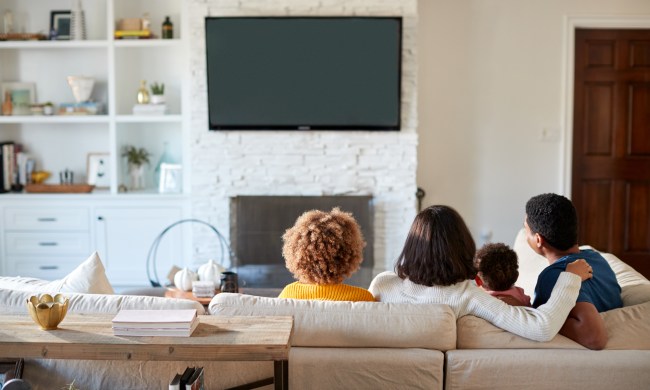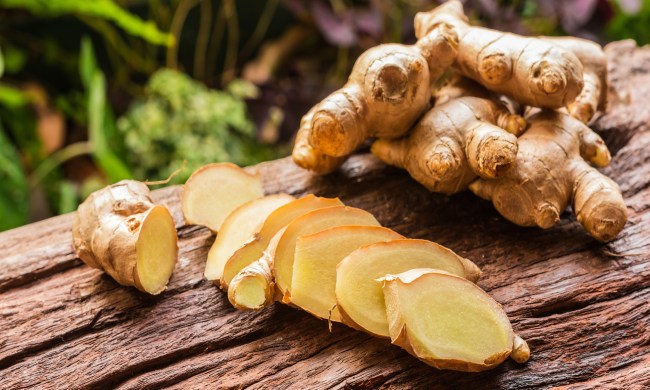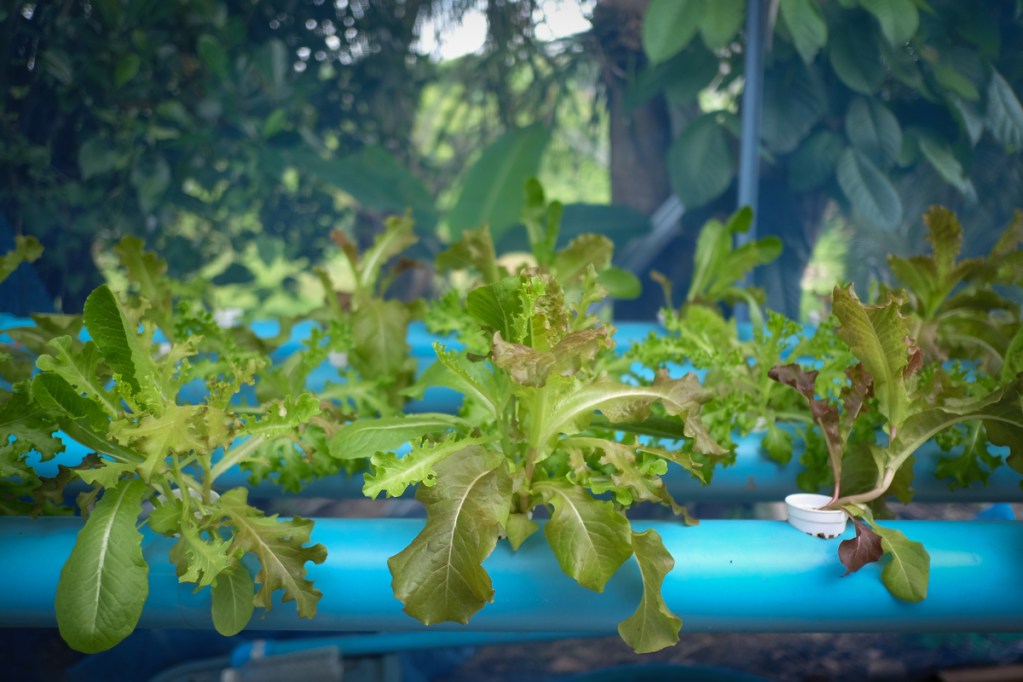
If you’ve ever wondered whether there was a way to make indoor gardening less messy, hydroponics may be the way to go! Indoor hydroponic gardens can help make fall and winter gardening more uniform, and you can grow almost anything you can think of. Hydroponic gardens are a great way to extend the growing season, providing fresh food through fall and winter.
Which plants should you grow in yours? Some plants are better suited for hydroponics than others, though, and there are even some varieties within different plant species that grow better than others. These are the best plants for hydroponics, so you can start your garden out right.
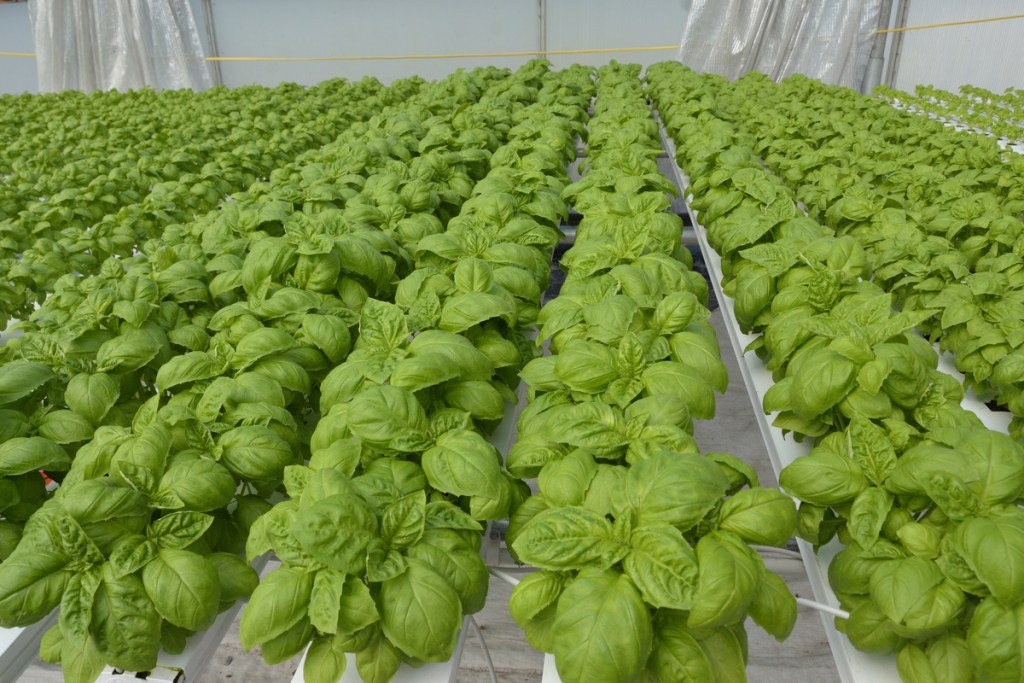
Basil
Basil is one of the best herbs to grow hydroponically, and it can be started from seeds or cuttings. Basil is a quick-growing plant, often reaching a harvestable size within 28 days in a hydroponic system. Some varieties will thrive better in water than others, and it’s often preferred to choose a faster-growing type of basil because of the higher yields.
Some of the best fast-growing basil varieties to grow are Newton and Prospera. Newton is a uniform variety that has the traditional Italian flavor you taste in a lot of pasta sauces, as well as Fusarium resistance, while Prospera is similar in uniform growth but is also resistant to downy mildew. If you’re patient and want to try a slow-growing variety of classic flavors, Everleaf and Elidia are some good options.
Caring for hydroponically grown basil isn’t all that different from soil-grown. You should use liquid fertilizer to give the plant proper nutrients (it’s best to find one that’s recommended for hydroponic basil) and make sure the plant has good airflow around it to prevent any issues. Other tips include:
- Pruning regularly with sanitized shears
- Providing adequate light and heat
- Choosing a system best suited for basil
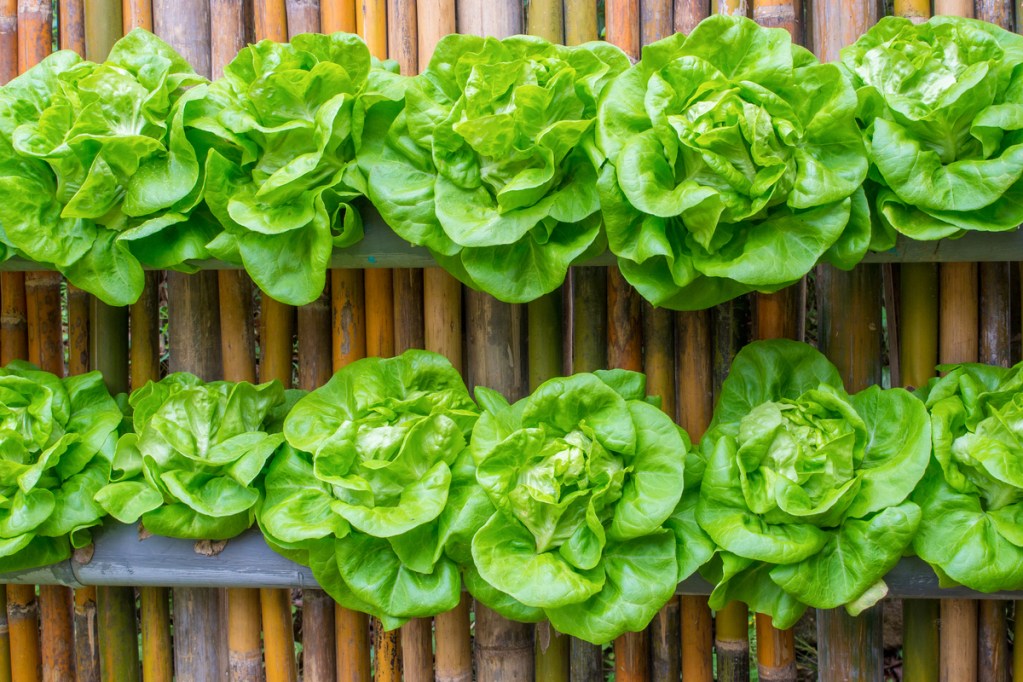
Lettuce
Like basil, lettuce can be grown hydroponically from seeds or cuttings. In most circumstances, you can try to transition ones planted in soil into a hydroponic setup, but the transition may be a bit difficult, and you’ll need to make sure you rinse off all the soil from the plant and roots before placing it in the system.
Over the years, there have come to be over a thousand varieties of lettuce. The ideal ones for hydroponic growing are those that have faster growth speed and more disease resistance, including:
- Butterhead
- Little gem
- Romaine
Lettuce is easy to care for and is great for growing alongside other leafy vegetables and herbs, so long as they share similar nutrient needs, like basil, spinach, arugula, and mint. When harvesting from a hydroponic system, it’s often best to follow the same method you would if the lettuce was planted in your garden. Harvest the outer leaves first, as needed once they’re mature enough, to allow the inner leaves to keep growing and lengthening your harvest.
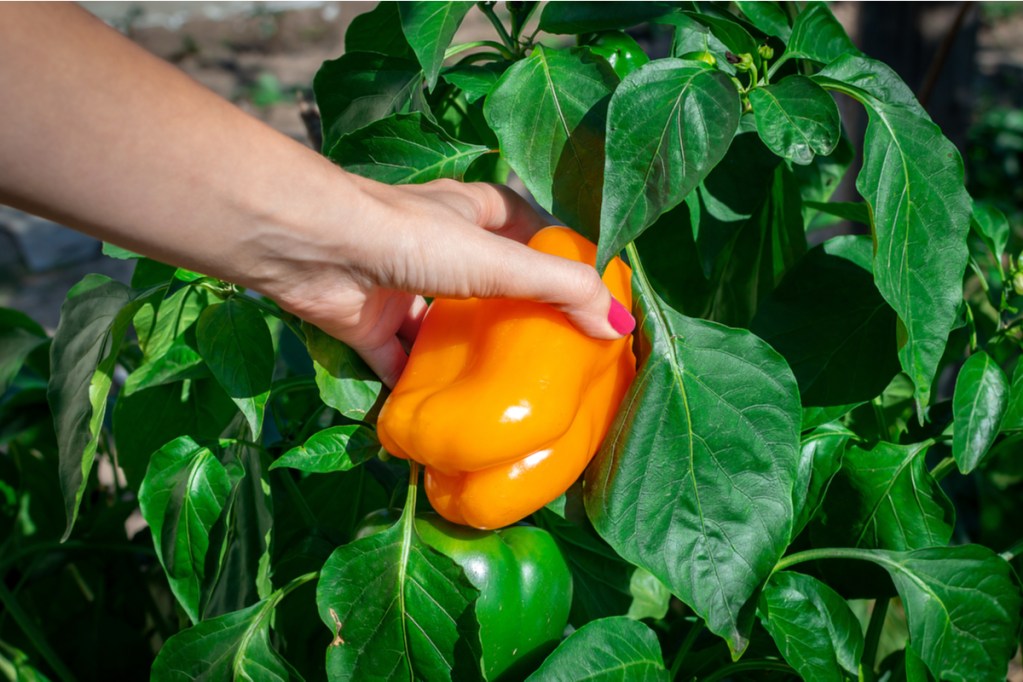
Peppers
Peppers are especially wonderful to grow in hydroponic setups because they prefer warmer conditions. Why does that matter? For people who love fresh peppers, growing them indoors in a hydroponic setup lets you harvest and eat them during the fall and winter months, when they can’t be grown outdoors. Best yet, they tend to have fewer problems with pests and diseases than ones grown in soil.
Different varieties of peppers will need different amounts of space between them in order to grow adequately. For example, even in a hydroponic system, bell peppers will need to be 18 to 24 inches apart, while chili peppers only need half that. To get big and strong, hydroponic peppers need around 14 to 18 hours of sunlight a day, leaving the remaining amount for a night cycle.
Hydroponic-grown peppers are usually mature and ready for harvesting anywhere between 50 and 80 days. If you want to space out your harvest, you can plant different sets a few weeks apart so they reach maturity at different times.
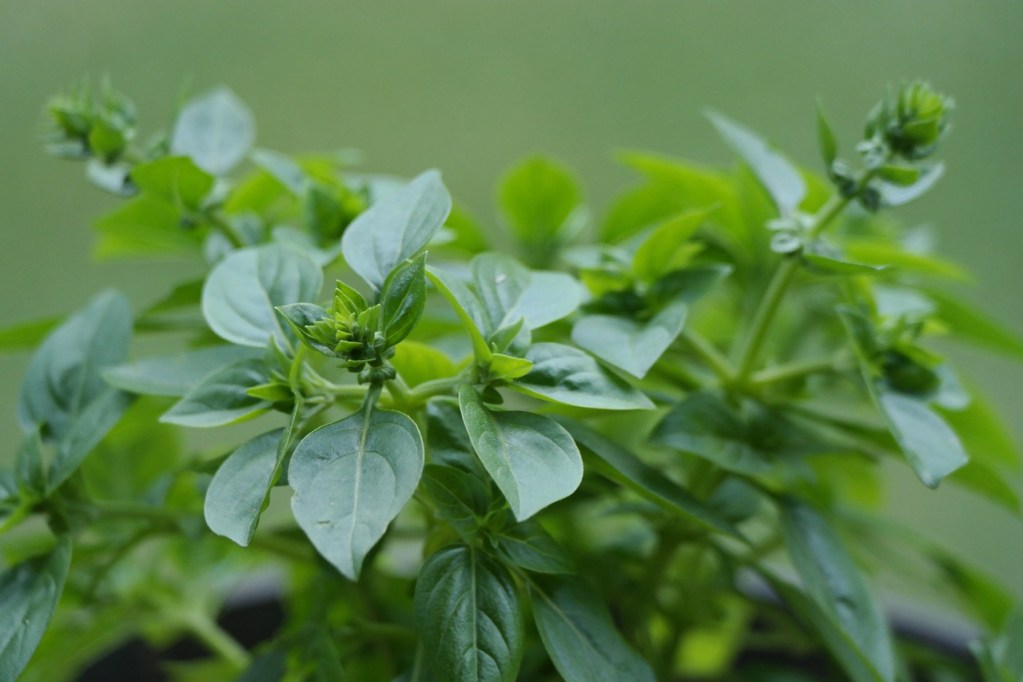
Oregano
Oregano can be grown hydroponically from seeds or cuttings; however, seeds are often preferred by gardeners because the plants that grow stay more true to the variety. The seeds usually germinate in one to two weeks and you can start harvesting once the plants have reached about six inches tall.
Oregano, whether grown in soil or in water, should be harvested once flower buds start to appear because that’s when the flavor is best. To encourage your herb to continue growing (and this goes for basil, as well!), you should follow the pinching method for harvesting so that your plants don’t get too tall and leggy.
Remember that oregano grown outdoors likes a lot of sun, so bright, indirect sunlight will be ideal even in a hydroponic system. If you don’t have ample sunlight in your home, you can also purchase grow lights to help!
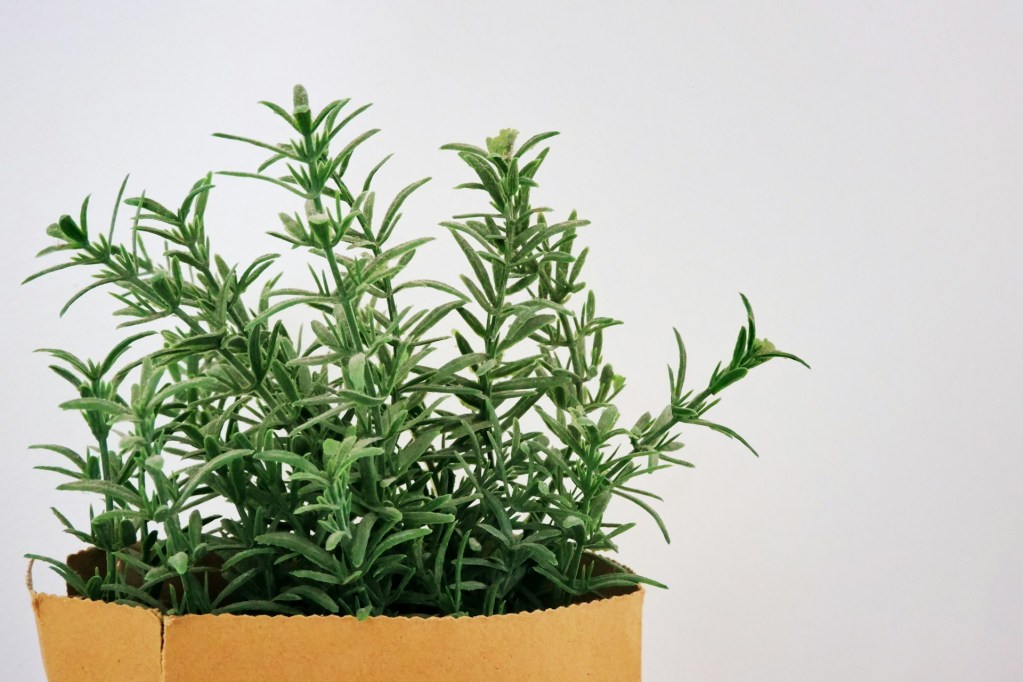
Rosemary
Rosemary is an herb that has a very low germination rate, so although you can grow it from seed in hydroponic systems, you’re better off using cuttings if you want a higher chance of the plants surviving. Rosemary is very slow growing, often taking 15 months to be ready to start harvesting from and years to get to its full size. This timeline makes starting from cuttings even more preferable, as they’ll already be a bit bigger than the plants would be if you started from seed.
Indoor hydroponic rosemary will enjoy at least 11 hours of sunlight per day. If growing in a well-lit room, you should make sure the lighting is bright and indirect to avoid burning. Once the plants are established in your system, you can start harvesting! For rosemary specifically, it’s recommended that you do a weekly pruning/harvest to encourage fuller plants.
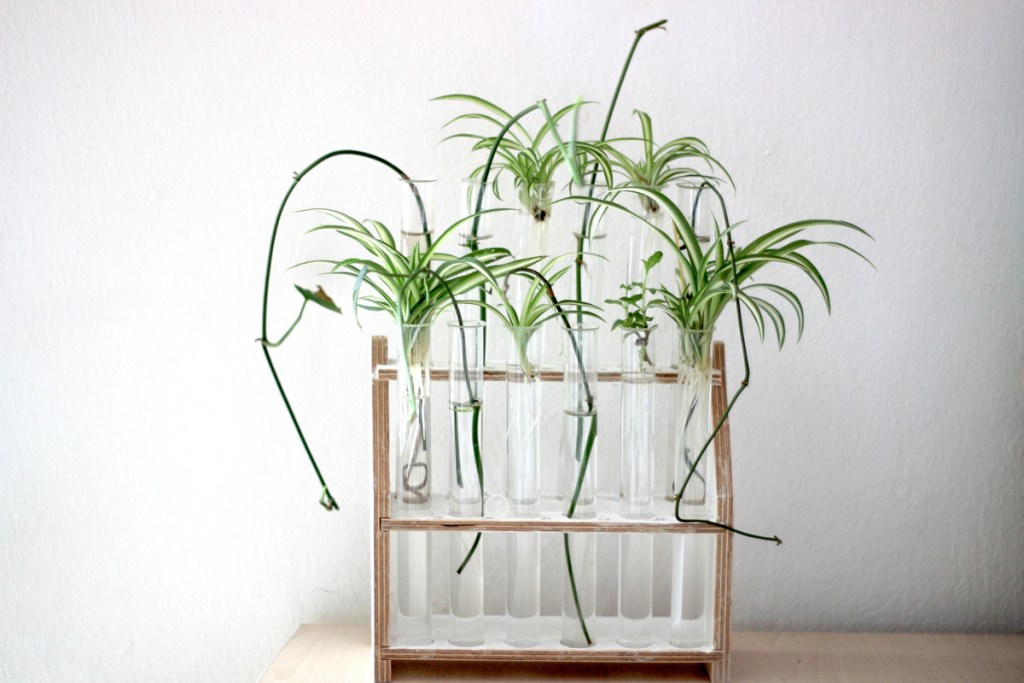
Spider plant
Houseplants can be grown hydroponically, too! Spider plants don’t need a fancy hydroponic system and are often grown better in water when started from a pup grown on the parent plant. But why grow a houseplant in water? Well, for some of the same reasons you’re tempted to grow indoor vegetables and herbs in water. It reduces the mess from soil, decreases the risk of overwatering, and allows you to provide more uniform care for the plant.
Spider plants are as hardy in water as they are in soil, only needing a decent amount of light and some water with the occasional nutrients. They aren’t picky about temperature, so long as it isn’t incredibly humid or cold to the point that they’ll freeze. Keep in mind that some tap water contains high levels of chlorine, which isn’t beneficial for plants. If you don’t have a water filter, you can leave the water out over a night or two before putting the plant into it.
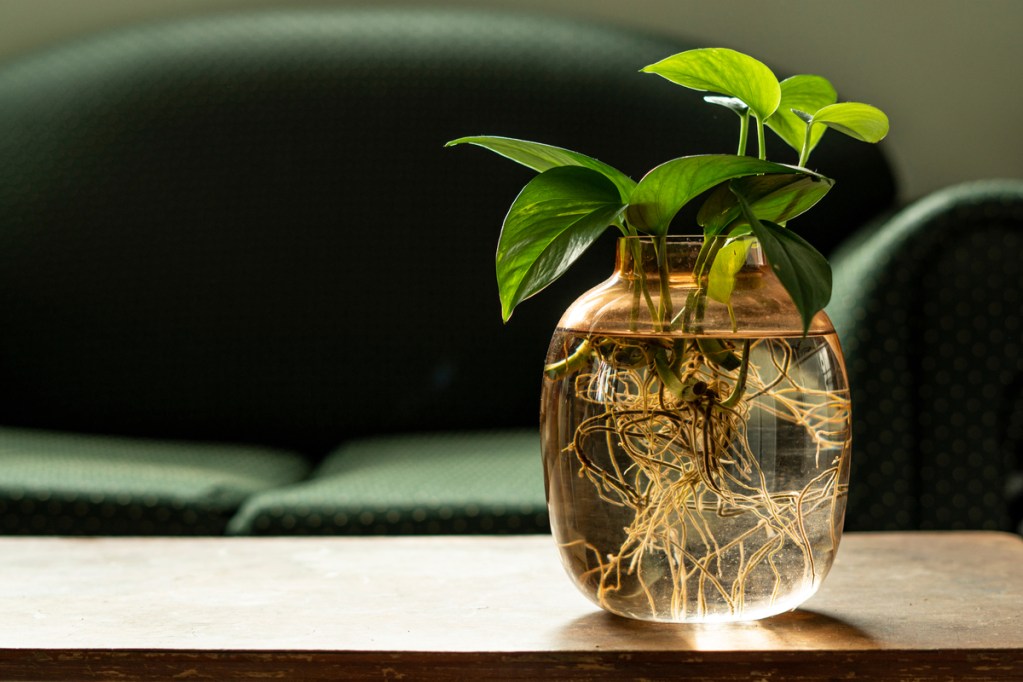
Pothos
Pothos varieties are another great houseplant to grow in water, also thriving best when started from cuttings. They can live for years in water as long as they’re cared for properly. Because they’re hardy like spider plants and enjoy a decent amount of humidity, growing in water can even be preferable.
Because you won’t usually grow houseplants in a hydroponic system, you will need to replace the water now and then in order to replenish the oxygen so that the roots are still getting all the essentials they need. You’ll also need to be mindful of algae growing in the container (both for spider plants and pothos!). It’s best to use something clear so that you can easily monitor the environment.

Strawberries
Having fresh fruit in your home in any season is delightful, so of course, many gardeners want to grow fruit hydroponically. Most berries can be grown in hydroponic gardens, including blueberries, currants, and even melons. Strawberries are perhaps the most popular berry for hydroponic gardens, because of their easy care, quick growth, small size, and delicious flavor. They need a growing substrate that offers plenty of air for their roots, such as peat or coco coir. Keep your strawberries in a warm, humid room with plenty of bright light. You can use grow lights to supplement sunlight and to encourage early or out-of-season blooming.
Growing indoors in hydroponic systems is a great way to have fresh veggies and herbs year-round, especially in the fall when the growing season is winding down. You can choose which system you want based on how much space you want to devote to indoor growing. Having water-grown houseplants can minimize mess while also providing uniform care during the off season. If you like growing plants indoors, hydroponic systems may be worth looking into.
